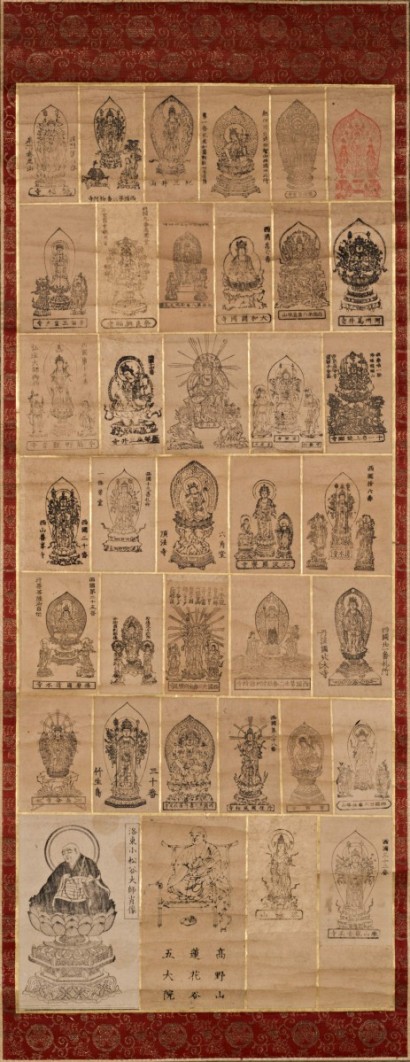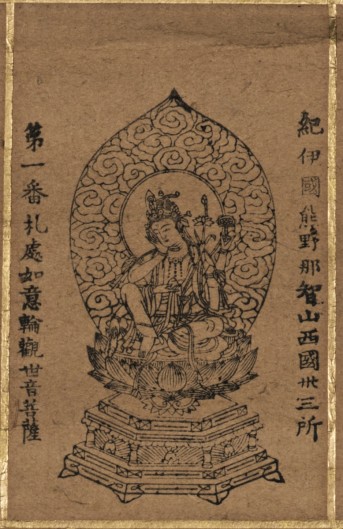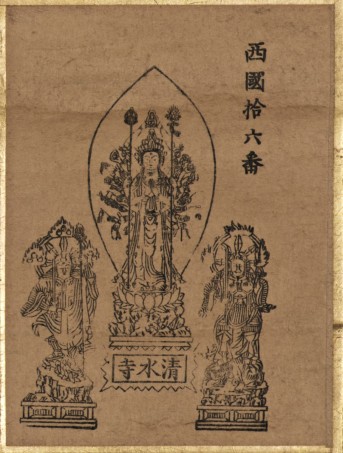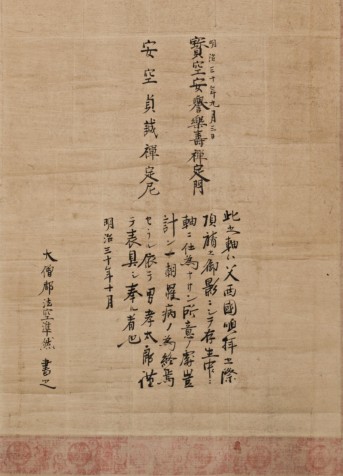Japan, 19th century; ink stamps on paper mounted on silk; mounted prints: 36 x 14 5/8 in., overall including brocade and knobs: 58 1/2 x 22 3/4 in.; Private Collection.
Composed of thirty-three sites dedicated to Kannon in Japan’s Western Provinces, Saigoku Pilgrimage has been one of the country’s most popular circuits from the medieval period to the present day. Each temple houses a main Kannon icon and prints a reproduction of it, called an ofuda. Since the secret images are usually not revealed to the public, collecting ofuda during pilgrimage has become as important as the journey itself. Each of this scroll’s ofuda, or block-printed stamp, represents a primary temple icon for every Saigoku Pilgrimage stop. These ofuda all have similarities, such as Kannon framed by a mandorla, standing on a lotus pedestal above rocky Fudarakusan. Yet, they also differ in form and iconography. From the inscription on the verso, we know that a man named Taro mounted this scroll to memorialize his recently deceased pilgrim father, who collected the images of Kannon that we see in this work. MD and LL







